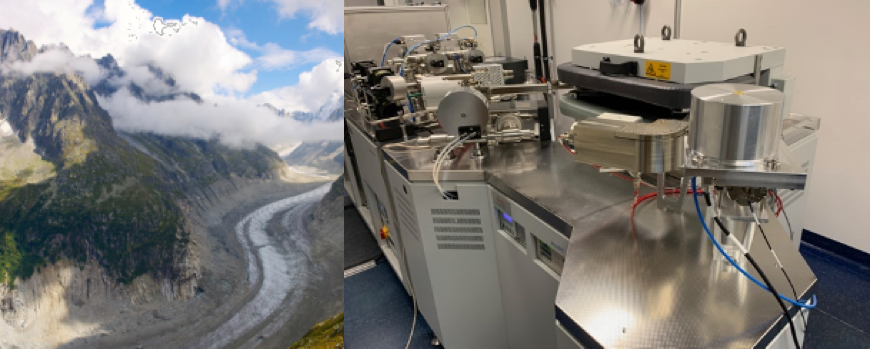Climatic Control on Mountain Erosion and Relief – the COOLER project Peter van der Beek
Peter van der Beek
The ERC-funded research project COOLER aims to quantify the feedbacks between tectonic processes in the lithosphere and climatic processes in the atmosphere. Nowhere is the effect of climate change on mountainous relief and erosion more evident than in currently or recently glaciated mountain belts, where late-Cenozoic climate cooling and the onset of glaciations have profoundly altered erosion processes and consequently reshaped the landscape by carving deep glacial valleys. Despite this visually striking impact of glaciation on landscapes, the relative efficiency of glacial versus fluvial erosion has been a subject of continuous debate since the recognition of Quaternary glaciations in the late 19th century.
Our current understanding suggests that glacial erosion is not more efficient than fluvial erosion over long (million-year) timescales, at which both fluvial and glacial erosion rates tend to track tectonic-uplift rates. However, glacial processes strongly modify landscapes by selective erosion, which can be understood from the basic physics of glaciers. The timing and impact of the transformation from fluvial to glacial landscapes and its relationship to climate remains an open question; estimates vary from the mid-Pleistocene (~1 Ma) in mid-latitude mountains such as the western Alps to the Eocene-Oligocene (~30 Ma) in high-latitude regions such as Greenland and Antarctica. The glacial response time (i.e., how long it takes to transform a fluvial into a glacial landscape) similarly remains unknown. The potential feedbacks between surface erosion and the underlying tectonic driver add further complexity to this coupled system.
Three major research questions thus remain unanswered:
• To what extent has the switch from fluvial to glacial erosion in mountain belts affected their topographic relief, and has this change substantially increased global erosion rates and sediment fluxes? What is the response time for these modifications?
• Is the glacial imprint on topography globally synchronous, or does it track spatially and temporally variable conditions that locally allow for efficient glacial erosion? Can latitudinal variations in relief change be demonstrated? Have high-latitude regions gone through an early period of efficient glacial erosion before their current state in which topography is preserved?
• Are there couplings between tectonic activity and topographic-relief development in response to glaciation? Do tectonic uplift rates modulate the glacial imprint on the landscape? Can feedbacks be demonstrated, whereby glacial erosion affects the tectonic deformation field?
Answering the above questions will require the development of tools that record erosion rates and relief changes with higher spatial and temporal resolution than the current state-of-the-art, and integrating the newly acquired data into next-generation numerical models that link observed erosion-rate and relief histories to potential driving mechanisms. This is the objective of the project COOLER.
Within the project, there are currently openings for two PhD students as well as several opportunities for Masters projects. Contact Peter van der Beek if you are interested.

